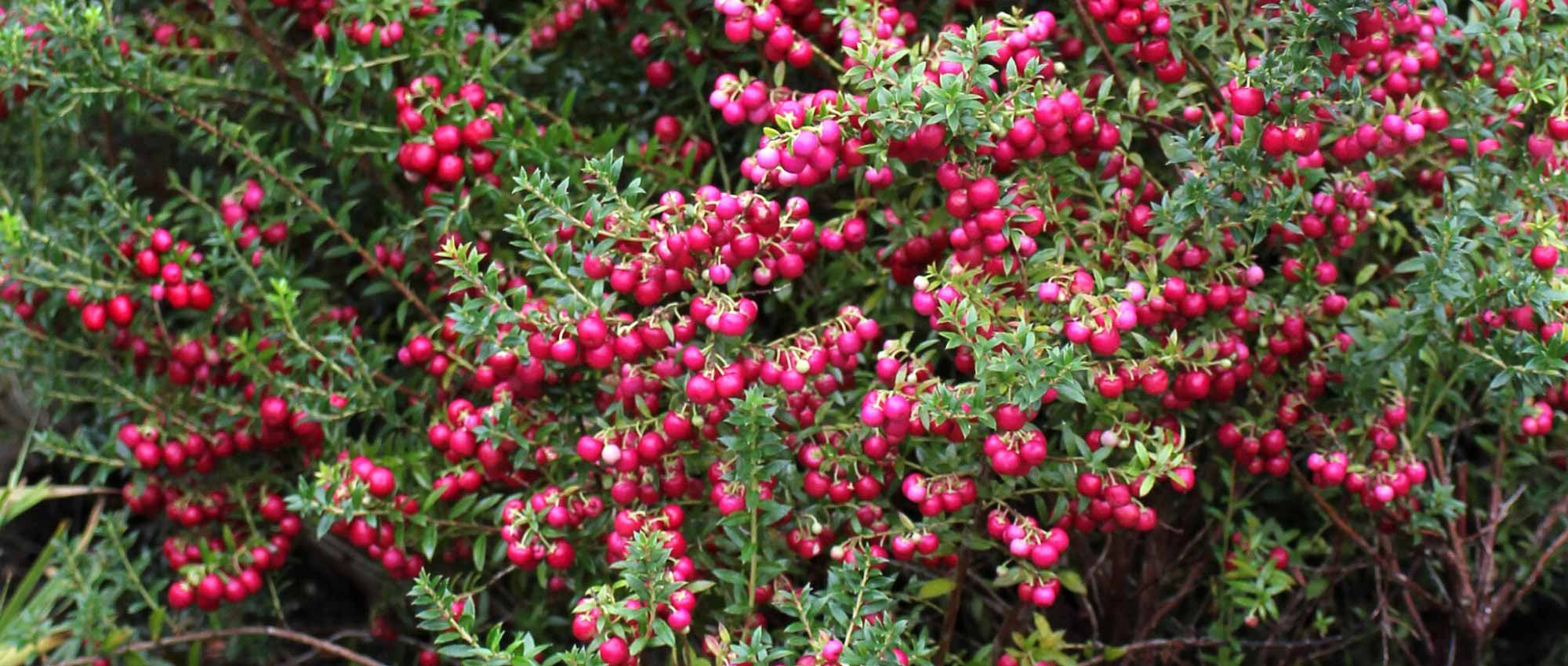
Gaultheria: planting, growing and caring
Contents
Wintergreen in a few words
- Wintergreen is a small shrub with a typically very low and spreading habit, creeping.
- It bears small, ovate, bluish-green leaves that are shiny and evergreen.
- It produces white or pink bell-shaped flowers.
- These are followed by red, pink, white, or purple-pink berries, which persist throughout the winter.
- A heather soil plant, it thrives in shade, in cool, well-draining, and preferably acidic soil.
The word from our expert
Wintergreen is a shrub with a generally creeping habit, featuring bluish-green evergreen leaves and bell-shaped white or pink flowers. However, it is most cherished for the numerous colourful berries it bears throughout the winter! The most common species is the Gaultheria procumbens, native to the forests of North America and renowned for its medicinal properties. However, there are many other species and varieties, which differ notably in their size and habit (creeping or upright) as well as the colour of their berries: pink, red, white, purple-violet, bluish…
Wintergreen is a cousin of heathers, rhododendrons, and blueberries, sharing their preference for acidic, light, and well-draining soil. It has the advantage of being very hardy, tolerating temperatures between –15°C and –25°C. In the garden, it thrives in shade or partial shade, such as in woodland settings, heather soil beds, or shaded rockeries. It takes time to establish itself, but once settled, it requires very little maintenance. Discover all our tips for successfully growing wintergreen in your garden!
Botany
Botanical data
- Latin name Gaultheria sp.
- Family Ericaceae
- Common name Wintergreen, Canada Tea, Boxberry
- Flowering between May and September
- Height between 15 cm and 1.20 m
- Sun exposure shade or partial shade
- Soil type fresh and well-drained, rather acidic, humus-bearing, light
- Hardiness -15 °C to -25 °C
Wintergreen encompasses around 165 species of small evergreen shrubs, with upright or creeping stems. They originate mainly from the Americas (North and South), but also from eastern Asia and Australia. The most well-known and cultivated is the Creeping Wintergreen, Gaultheria procumbens, which comes from North America (Canada and the United States). Wintergreen grows primarily in woodland areas, on fresh and acidic soils, but also in rocky environments. These are hardy plants, tolerating temperatures between -15 °C and -25 °C depending on the species.
Wintergreen belongs to the heather family, the Ericaceae, like many shrubs that thrive in heather soil: azaleas and rhododendrons, Kalmias, Andromedas (Pieris), Leucothoe, Enkianthus, blueberries and cranberries (Vaccinium). It is therefore no surprise that it enjoys similar growing conditions.
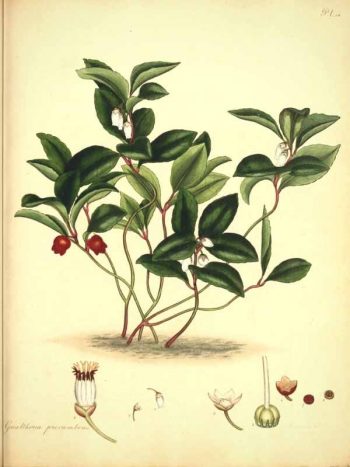
Gaultheria procumbens: Botanical illustration
Wintergreen was named in honour of Jean-François Gaultier (1708-1756). Previously, species from the Southern Hemisphere were separated into the genus Pernettya, but they were later renamed Gaultheria. This is the case, for example, with Gaultheria mucronata.
Most cultivated wintergreens are small shrubs with a very low, cushion-like or creeping habit. The Gaultheria procumbens, for example, forms a ground cover that does not exceed 15 cm in height! Slightly taller, the Gaultheria mucronata reaches 80 cm in height, while the Gaultheria shallon forms a true small shrub that reaches 1.20 to 1.50 m in all directions at maturity.
Wintergreen has evergreen foliage, which remains decorative even in winter! It bears small ovate or elliptical, leathery leaves, generally measuring 2 to 3 cm in length (and up to 10 cm in some species). The leaves are inserted alternately on the stems (one leaf after another). Those of Gaultheria procumbens are shiny blue-green, slightly dentate along the edge of the lamina. They turn red at the end of the year under the effect of cold.
Gaultheria procumbens flowers from spring to autumn, from May to September, while Gaultheria mucronata and Gaultheria shallon flower in spring (May-June). Wintergreen then produces beautiful small rounded bell-shaped flowers, white or pink, resembling bells and measuring 4 to 7 mm in length. They are solitary or clustered, inserted in the axils of the leaves on a short peduncle. The corolla tube opens into five very short lobes, corresponding to the five fused petals. The flower also bears five small sepals at the base, surrounding the petals.

The flowers of Gaultheria shallon and G. procumbens, the foliage of G. procumbens (photo: Agnieszka Kwiecień)
In autumn, wintergreen produces small globular, fleshy berries, resembling pearls! Depending on the variety, they can be red, pink, purple, dark blue, or white. Some horticultural varieties have even been selected specifically for their colourful fruits. The berries measure about 1 cm in diameter and add a beautiful splash of colour to the garden in winter! They are pseudocarps, formed by the calyx (sepals) which swells and thickens after fertilisation. The true fruit is the small capsule located in the middle of the calyx, which contains the seeds. The berries remain in place all winter, sometimes until spring… if they are not devoured by birds, which love them!
Most wintergreens are dioecious: there are male plants (bearing only male flowers, with stamens) and female plants (bearing female flowers, with a pistil, and producing colourful berries containing the seeds after pollination). Therefore, to enjoy the decorative fruits, it is best to plant several specimens.
The fruits of Gaultheria procumbens are edible, and its leaves can be used to make tea, earning it the nickname “Canada Tea”. Wintergreen also produces an essential oil, often marketed as “wintergreen essential oil”. It is reputed for joint and muscle comfort, especially for athletes. It is said to have pain-relieving, anti-inflammatory, and antispasmodic effects, and may help treat arthritis, tendonitis, rheumatism, cramps, and migraines.

The berries of wintergreens take on different shades depending on the species and varieties. From left to right, Gaultheria procumbens, G. mucronata, G. fragrantissima (photo: Jamer Gaither) and G. procumbens ‘Gaulthier Pearl’
The main varieties of wintergreen
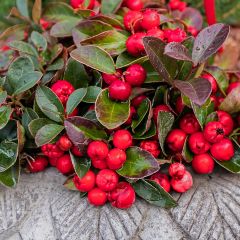
Gaultheria procumbens - Creeping Wintergreen
- Flowering time June to October
- Height at maturity 15 cm
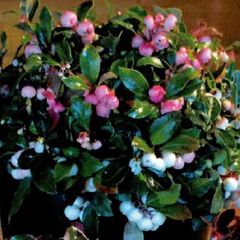
Gaultheria procumbens Color Surprise - American Wintergreen
- Flowering time August, September
- Height at maturity 15 cm
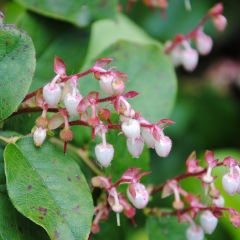
Gaultheria shallon
- Flowering time June, July
- Height at maturity 1,20 m
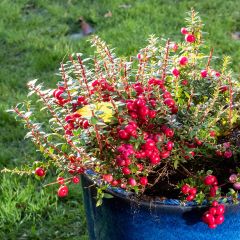
Pernettya mucronata
- Flowering time June, July
- Height at maturity 80 cm
Discover other Gaultheria
View all →Available in 2 sizes
Available in 1 sizes
Available in 1 sizes
Available in 1 sizes
Available in 1 sizes
Available in 1 sizes
Planting
Where to Plant?
Native to the forests of North America, the Gaultheria is a shade or partial shade plant; however, it can tolerate direct sunlight as long as the soil remains moist. Like other heather soil bushes, it thrives in acidic soils and dislikes limestone. It will, however, grow in neutral soil. It prefers fresh but well-drained, light, and humus-bearing soils. It is important that water does not stagnate in winter and that the soil does not dry out too much in summer. At planting time, feel free to add some well-decomposed compost and heather soil, which you will mix with garden soil.
You can plant Gaultheria in a shaded rockery, in a heather soil bed, or under wood. It is also ideal for creating a pot or planter composition.
Since Gaultherias are dioecious, we recommend planting several young plants together: this will facilitate pollination, and you will more easily obtain numerous colourful berries. However, avoid planting too densely: as this is a spreading plant over time, ensure there is enough space around it.
When to Plant?
We recommend planting Gaultheria in autumn, around October, but planting is also possible in spring.
How to Plant?
In the ground:
- Dig a planting hole, about three times the size of the root ball.
- We recommend adding some well-decomposed compost and heather soil, mixed with the planting soil.
- Remove the Gaultheria from its pot and place it in the centre of the planting hole.
- Fill the hole by replacing the substrate all around, then lightly firm the soil.
- Water generously.
- Optionally, add a layer of organic mulch.
In a pot:
- Choose a pot with drainage holes at the bottom to allow watering water to escape.
- Place a drainage layer made of clay pebbles or gravel.
- Then add the substrate to the pot, ideally a mix of potting soil and heather soil.
- Place the Gaultheria in the centre of the pot.
- Fill in by adding substrate all around, then lightly firm the soil.
- Water.
- Place the pot in a shaded location.
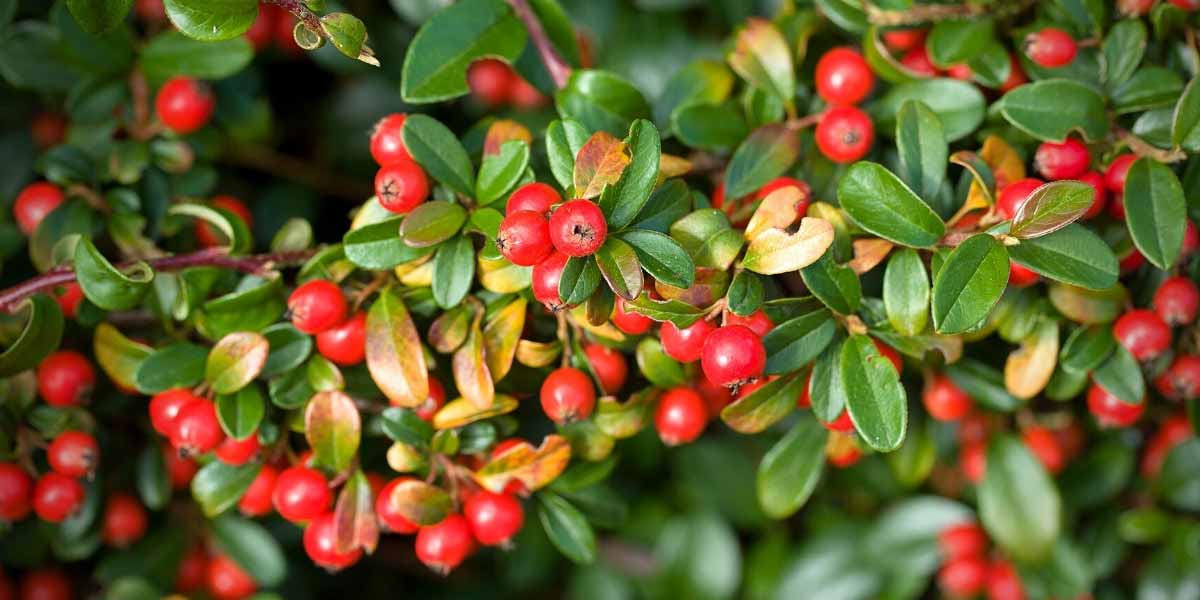
Gaultheria procumbens
Maintenance
The Wintergreen is a plant that needs time, at least two to three years, to become well established. We recommend watering it occasionally during the first few years, especially during dry spells. As it dislikes lime, rainwater is preferable. We also advise applying a layer of organic mulch around its base (such as dead leaves or pine needles) to keep the soil moist for longer.
The Wintergreen does not require pruning, unless you wish to limit its spread or if it exceeds the area you have allocated for it. It tends to expand over time by producing suckers, but it is easy to control.
Multiplication
To propagate Gaultheria procumbens, the simplest method is to take suckers. However, sowing and propagation by cuttings are also possible.
Sowing
Sowing is done in autumn. Harvest fruits from a young plant of Gaultheria, then extract the seeds by separating them from the pulp.
- We recommend mixing the seeds with fine sand to make handling easier.
- Prepare a pot by filling it with special sowing compost, then lightly tamp down and level the surface.
- Spread the seeds mixed with sand over the surface.
- Cover them with a thin layer of substrate.
- Water gently with a fine spray.
- Place the pot under a cold frame.
Propagation by Cuttings
Propagation by cuttings is done in summer, in July or August.
- Take a semi-lignified stem, 6 to 10 cm long, lignified at the base but tender at the tip. Ideally, take it with a heel (the base of the stem where it was attached).
- Remove the leaves from the lower part, leaving only a few at the tip. Similarly, if there are any flowers, remove them.
- Prepare a pot with a light, well-draining substrate, then water.
- Plant the stem in the substrate.
- Firm the soil around it to ensure good contact between the compost and the stem.
- Place the pot under shelter, in a bright spot but out of direct sunlight.
Division of Suckers
Gaultheria procumbens naturally produces suckers: it sends out shoots from its roots. To propagate it, simply take one of these suckers in autumn or spring, separating it from the parent plant with a spade. Replant immediately in the ground and water.
Association
As it thrives in acidic soil and shaded locations, the wintergreen is the perfect companion for heather soil bushes. Pair it with rhododendrons and azaleas, Japanese maples, Pieris, Kalmias, and Daphnes. Discover the Crinodendron hookerianum, a lesser-known bush bearing small red lantern-shaped flowers, as well as the Enkianthus campanulatus, whose bell-shaped flowers will echo the wintergreen’s flowering. Also consider camellias and hydrangeas. You can grow Gaultheria procumbens as ground cover at the base of these bushes. Its red berries will add a splash of colour in autumn and winter.
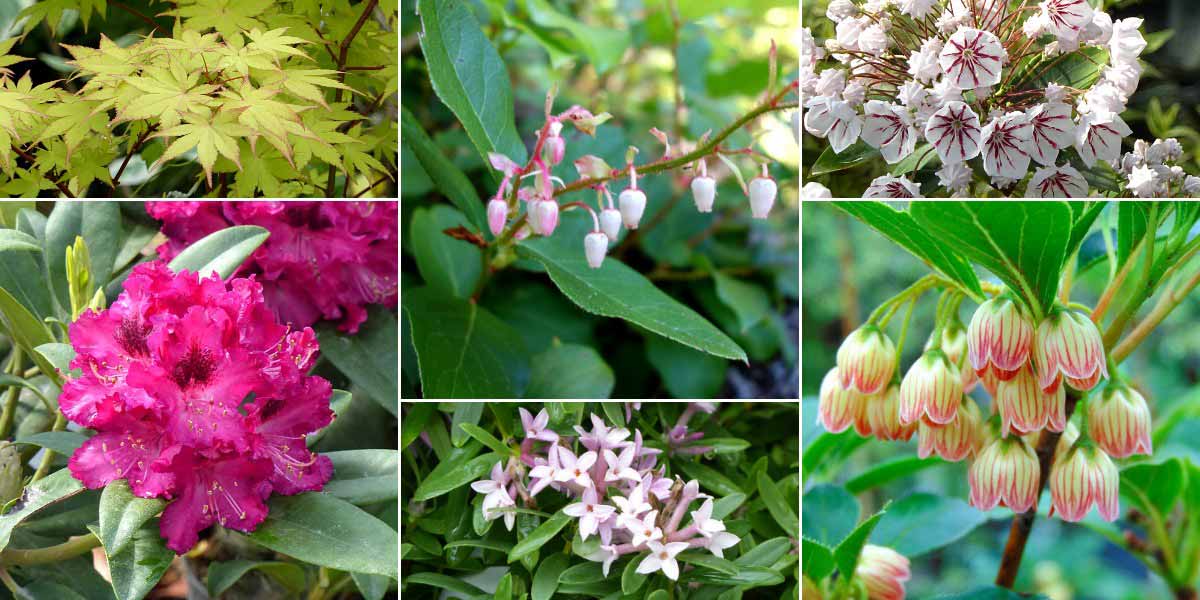
Acer palmatum ‘Summer Gold’, Gaultheria shallon, Kalmia latifolia ‘Peppermint’, Rhododendron ‘Nova Zembla’, Daphne transatlantica ‘Pink Fragrance’, and Enkianthus campanulatus
Take advantage of the wintergreen’s berries to create a beautiful winter garden, alongside decorative-barked bushes, such as the dogwood Cornus alba ‘Baton Rouge’, the Acer davidii ‘Viper’, and the Prunus serrula ‘Amber Scots’. Also enjoy the colourful berries of Skimmia reevesiana, Symphoricarpos, and Callicarpa.
Wintergreen also makes for stunning potted arrangements, ideal for adding colour in winter. With its evergreen green leaves and red berries, it will create a perfect Christmas display! You can craft a red, green, and white arrangement by pairing it with the flowers of the Helleborus niger. You can also plant it alongside heathers, variegated ivy, Carex, heucheras (such as ‘Berry Smoothie’), and a small evergreen fern like the Polystichum acrostichoides.
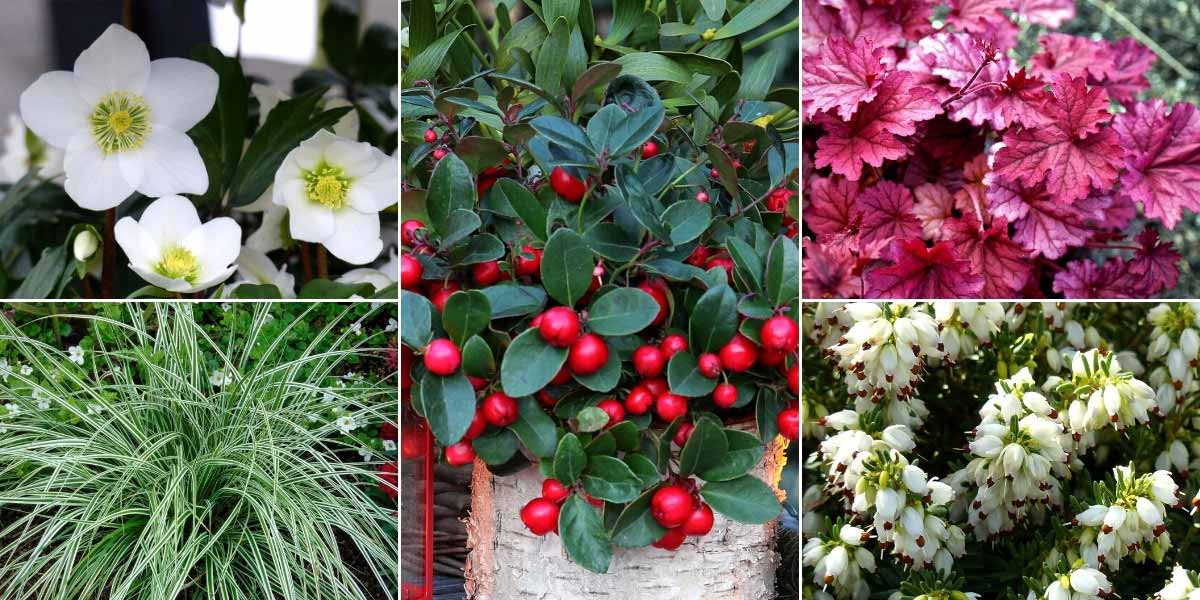
Helleborus niger, Gaultheria procumbens, Heuchera ‘Berry Smoothie’, Carex oshimensis ‘Everest’, and Erica darleyensis ‘Winter Belles Katia’
- Subscribe!
- Contents
































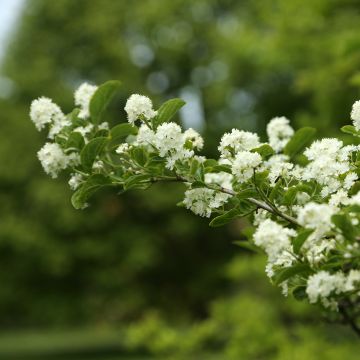


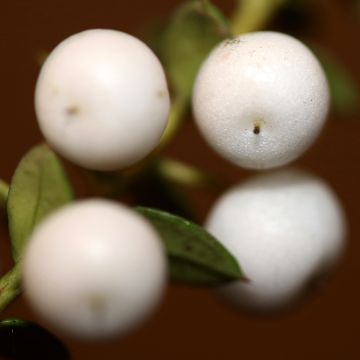
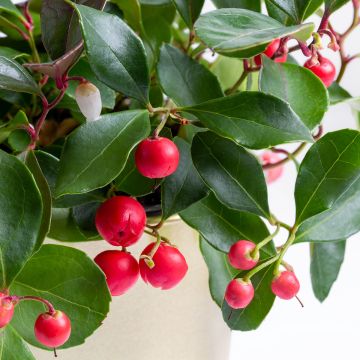
Comments